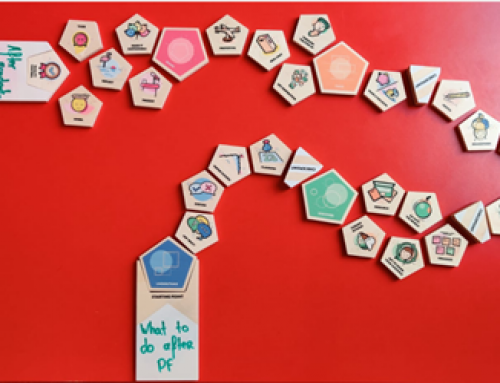A sexy, soulful, and confident life, that sounds good, doesn’t it?
Since we are so busy with performing, and standing out, sometimes we forget to look at ourselves. We tend to forget our own health conditions. The organisation ‘The Green Happiness’ inspires its consumers via books, social media, retreat programs, and essential oils to help them to eat more consciously and, subsequently, making them feel more energetic, radiant and sexier! Not just to make them happier, but also to have a positive influence on the environment, animal welfare, and the planet. In other words: a sexy, soulful, and confident life.
A few weeks ago, I met one of the co-founders of The Green Happiness, we talked about a construction builder. If you cannot picture one yet, let me help you; a construction builder is probably a large and strong man, a bit rude when dealing with people, he eats, a lot, and what he specifically eats is meat! We talked about an actual construction builder, a man, who felt he could not be himself at work because he is ashamed of his choice to eat vegan.
Due to this question, certain questions arose inside my head. Because, in what society are we living if we cannot be ourselves when it comes to deciding what we want to eat?! Moreover, does this say more about the people who eat meat or more about the people who are vegan? That led me to the acceptance of change. In this blog, I will dive deeper into how acceptance and change in our society connect.
I am going to do a project for The Green Happiness. With the following starting point: how can we inspire people to eat vegan more often, without making them feel pressured.
Change
Change can come in all sorts of ways, changes in politics, changes in technology, changes in care, changes in a hierarchy or way of working in organizations, and so on. In my project, it is about the change in food, but I believe it goes deeper than that, through believes, habits, values, and cultures.
When I had to coach my so-called ‘coachee’ during the Minor ‘Powerful Coaching’, I needed to go deeper than the surface to find out what was obstructed in the motivation for a person to change. This was often about personal development changes like; becoming more assertive, or burn-out complaints, and stress-related questions. Individual changes are often very difficult, imagine how difficult a change in a society is, where you have to deal with many individuals.
For most of human history, our world changes very much and very quick. Technical, economical, social, and political changes, for example. Changes in technology, for instance, can be beneficial. We see what it brings us, and it is clear and certain. But when it comes to social change, it tends to become that we see our nostalgic ways of doing, are changing. Change frustrates human nature because it sweeps old structures away (Arbab, 1993). In other words: when a social change is happening, human interactions and relations are involved, in which change occurs in cultural norms and values as well.
Acceptance
I found an interesting article in which the difference and connection between change and transition are explained. Change is based on a situation, something changes about the way of working, for example. A transition goes deeper, then we talk about the psychological process people go through to manage the new situation. Change is external and transition is internal.
Let me explain this ‘change and transition’ by the example of the shift to become vegan in our society.
The change is that we now realize that producing meat is bad for our environment. Due to the innovation in technology and digitalization, we are now able to receive all this information. Because of this, we get confronted with this information almost every day. This effects the transition we experience inside, what we experience within ourselves. Some are faster because they are more open to change. While other people need to have a longer time to find their spot in the change, due to beliefs, values, and norms, they have known for their whole life already.

The transition is explained by the transition curve, which consists of seven phases (see figure 1). Acceptance comes in the middle of this curve and is defined as: “the first step for someone, to be able to let go of old attitudes and behaviors which have become comfortable”. In this phase, someone acknowledges and realizes old patterns need to change but is still searching on ‘how’. This can cause frustration and depression, because of not knowing what to put in place of the old behaviors and attitudes (Lockhart, 1995).
This, for example, could be someone who realizes eating vegan is better, but that he does not know how to approach it. Or a completely different example, when someone is fired. He also needs to go through this curve. First, it would be a shock, because his life will change unexpectedly, but when time passes, he will accept it, and he will start to test again to give meaning to his current situation. All phases appear for people to live with the change and even to continue life after the change.
I think that we are now at a certain point in society, where a lot of changes happen. In my first blog, I write about the many possibilities we now have. That makes that we daily have to decide whether we want to make the transition or not. Yet, it is also for most people the same, but these people start accepting the change later, because the change does not come so much from them, but from the environmental pressure that they may experience about the change.
In my opinion, that is mainly the difference between change and transition. The change in society and the transition in people how they deal with it and what happens in the person who is about the change. At the beginning of this blog post, I shared a story of the construction builder who became vegan. I believe he is still struggling in his transition because he is still ashamed based on his choice to become vegan. He tries to unite it in his life, but there is still something within his identity that is not accepting it for the full 100%. That could be something in his beliefs, his character, or maybe his past, I do not know. What I do know and believe, is that when change is happening, we could tend to go too fast to the integration of something new, even though we have still not accepted the current situation. I believe that if we do so, the new integrated behavior won’t last for the long-term. Besides, it won’t make you happy, which I believe should be the outcome when you have progressed through the transition.
Conclusion
At the beginning of this post, I told you I was interested in the connection between acceptance and change. Now I know, change is external, and acceptance is the transition that people need to go through when external change is happening.
Since I know now that change is external, I realize I can use this information within my project. If we want to make the change where people do not feel pressured to eat vegan again, I know now that I need to focus on the transition within people to feel the acceptance of eating vegan without feeling pressured. Only when we accept it ourselves, we can make the change and I hope I can make this happen.
I hope that I firstly, have inspired you in a way to cope with changes in your personal life, and how you then can go through your personal transition. Secondly, I hope that I have broadened your perspective on how to deal with social changes and that you keep in mind that when something is changing externally, people have to go through it internally first.
Have you ever experienced difficulties with change? Let me know in the comments, perhaps I can help you go through your transition curve!
References
Arbab, D. F. (1993, November). Living in a Rapidly Changing Society: Transition to Maturity. Opgeroepen op February 2020, van Bahai: https://www.bahai.org/documents/essays/arbab-dr-farzam/living-rapidly-changing-society-transition-maturity
Lockhart, A. Y. (1995, March). A cycle of change: The Transition Curve. Opgeroepen op February 2020, van Cranfield University School of Managment: https://www.ucd.ie/t4cms/Transition%20Curve%20Cranfield%20Article.pdf





